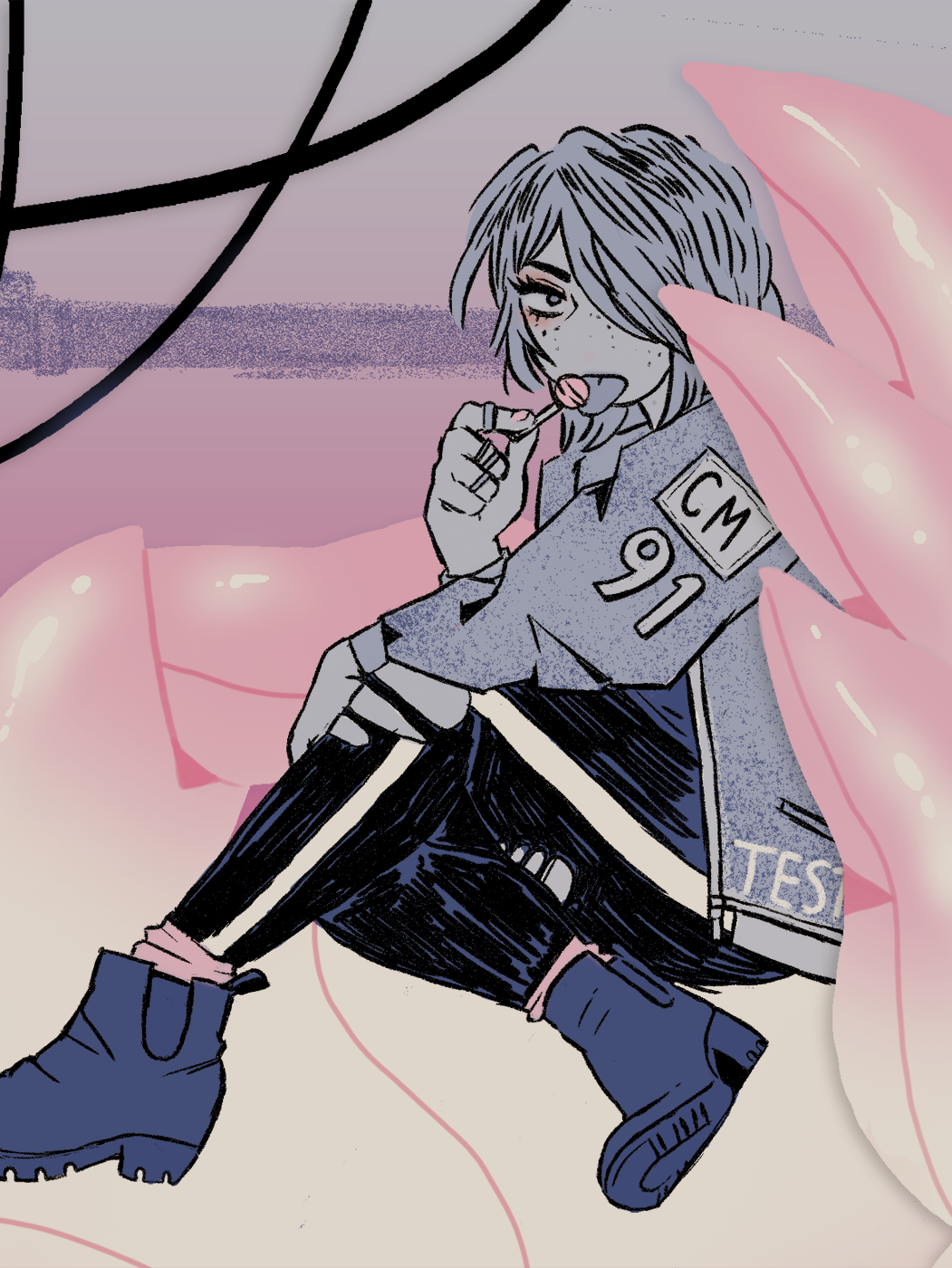I looked out over the darkening sky through my Venetian blinds. The rain began to fall and so did my spirits. I was no closer to cracking the case. That’s when there was a knock outside my door that would change everything. He was shorter than most, and very round. His eyes caught the light as I opened my door and peered into the dusk. He seemed as startled as I was. We both froze, and stared each other down. Here he was, on my doorstep, and he would be the key to everything. We were old acquaintances, part-time friends, and part-time enemies. This time, he was the latter. He was my prime witness and my prime suspect. He also taught me a valuable lesson.
I really have to get a better raccoon-proof garbage can, they learn fast.
I say all that so that I can say this: A Case of Distrust by The Wandering Ben is the perfect detective fiction, it gives you exactly what you expect, but also keeps you on your toes. There is a sense of humor and a sense of history that helps make it a standout member of the well-established genre. It does this by taking that traditional detective narrative and changing up just enough in both the mystery and in the way the story unfolds to create something both familiar and unique.
Holmes, Poirot, Nancy Drew, The Boxcar Children, and even many early works in the genre from The Three Apples to The Chalk Circle, are stories and ideas that have always intrigued us. A good mystery is hard to find and even harder to solve. For this game, A Case of Distrust finds its roots in 1920s detective literature and film, taking cues from noir and pulp fiction, and hard-boiled detective stories. There are small clues and easter eggs that connect it to films like Chinatown, The Maltese Falcon or The Big Sleep,. At the same time, the game bends and breaks tropes in a modern way that helps set it apart. Looking back at these classics with a current perspective, a lot of old detective fiction is narrow-minded. It has two-dimensional female, queer, and transgender characters that never move past that singular definition. It relies too heavily on established tropes and ideas that they never truly break free, and now, feel dated.
A Case of Distrust is a better mystery for being free of these dated ideals. You play as a female detective in 1920s San Francisco. Just this idea alone is unique in the genre for this time period. It even takes that old “dame walks into my office” opening trick and instead finds you face to face with your cat instead. Right from the get-go the game lets you know it won’t be like the other stories. By keeping players in a familiar setting, but by shedding the old ideas, the game can play with expectations. Characters are well-developed no matter who they are, and the idea of who committed these crimes never falls into the well-trodden tracks left by previous stories.
Good detective fiction keeps the audience one half-step behind. They never want the mystery to be too obscured, or have the answers be too obvious. The conclusion should make sense and never come out of left field. A game in this genre finds itself with an even trickier proposition: the player has to be one half-step ahead and behind at the same time. When solving the mystery yourself it should never be too hard, but if it is too easy then there is never that “a-ha!” moment of satisfaction as you piece together the true narrative. A Case of Distrust manages this very well, by switching up the mystery just as pieces start to fall into place, and by an incredibly well-designed investigation system. You are tasked with challenging alibis and evidence, and you do this through your own journal. Using facts, quotes, and ideas, you can confront your witnesses and suspects and catch them in lies in an intuitive manner. You almost always have all the pieces in front of you, it is just finding that perfect combination. Anyone can attest that a jigsaw puzzle missing pieces is no fun, the thrill of the deducing should come from connecting the clues and not overturning couch cushions to find that damn sky piece.
By setting the game in 1920s San Francisco, we can immediately picture the scene. That film noir vibe of crime lurking in every shadow, underneath the gleam of the Roaring Twenties. We see a post-war country with its decadence and success on display, but these qualities breed imbalance in class and wealth, which lead to crime. The setting is familiar but thanks to exhaustive research as well as great (optional) expositional cab rides, you can learn a ton about the city and the country’s politics and circumstances at the time. It is thanks to these details as well as the game’s efforts in making an even playing field and subverting well-established but dated storytelling techniques and predictable character motivations that A Case of Distrust becomes not only a good time capsule but also one that sheds tired pre-conceptions.
Always one step ahead, and one step behind, A Case of Distrust places in you in the gumshoes of a character who uses her unique position to outwit and surprise men who think little of her, and to connect with other characters who understand and relate to her unique position. The game’s strength is subverting tropes and expectations to both surprise the player in the mystery and also empower the characters to be more than what they were in the traditional hardboiled noir stories of old. Personally, I’m hoping we see more of Detective Phyllis Cadence Malone, or at least more stories that take our expectations of history and genre, and frame them in an unexpected, but a long overdue way.









